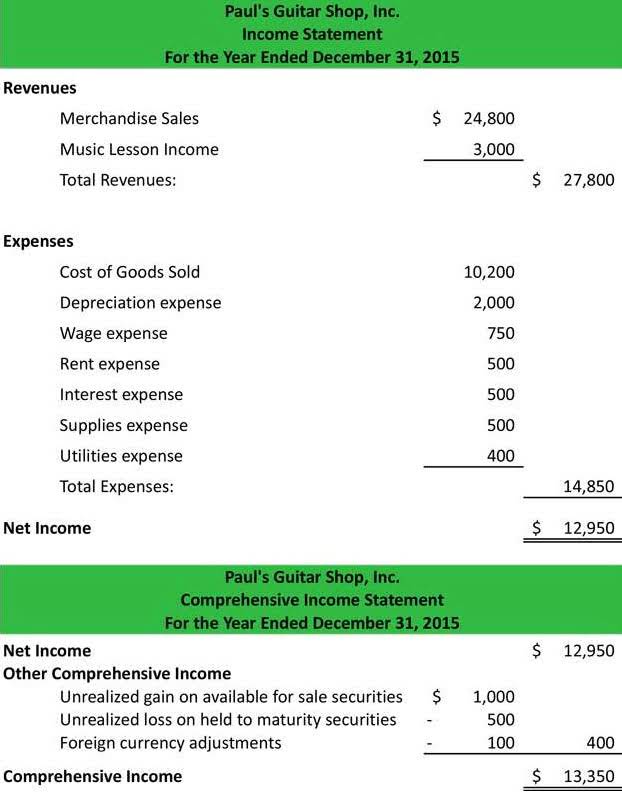
If you have a debt ratio of 60% or higher, investors and lenders might see that as a sign that your business has too much debt. As your business grows and you take on more debt, it becomes even more important to understand the difference between current and long-term liabilities in order to ensure https://www.bookstime.com/ that they’re recorded properly. Though not used very often, there is a third category of liabilities that may be added to your balance sheet. Called contingent liabilities, this category is used to account for potential liabilities, such as lawsuits or equipment and product warranties. Notice that the rules of debit and credit for asset accounts are exactly the opposite of the rules of debit and credit for liability and capital accounts.
- They’re recorded on the right side of the balance sheet and include loans, accounts payable, mortgages, deferred revenues, bonds, warranties, and accrued expenses.
- If you’re doing it manually, you’ll just add up every liability in your general ledger and total it on your balance sheet.
- Liability may also refer to the legal liability of a business or individual.
- After almost a decade of experience in public accounting, he created MyAccountingCourse.com to help people learn accounting & finance, pass the CPA exam, and start their career.
- Liabilities in accounting are recorded as financial obligations, but these act as the most efficient resource for companies to fund capital expansion.
- You would use this funding to purchase business assets and fund other areas of your operations.
Importance of Liabilities for Small Businesses
- All of our content is based on objective analysis, and the opinions are our own.
- In other words, net worth represents the residual interest in a company’s assets after all liabilities have been settled.
- In the case of liabilities, the “other” tag can refer to things like intercompany borrowings and sales taxes.
- Most accounts payable items need to be paid within 30 days, although in some cases it may be as little as 10 days, depending on the accounting terms offered by the vendor or supplier.
- A liability is generally an obligation between one party and another that’s not yet completed or paid.
As businesses continuously engage in various operations, their liability position can change frequently. The impact of these liabilities can significantly influence a company’s financial statements, making it essential for businesses to monitor, manage and strategically plan their liability structure. Familiarity with these concepts can help stakeholders make informed decisions about a company’s financial well-being and future prospects. Liabilities are any debts your company has, whether it’s bank loans, mortgages, unpaid bills, IOUs, or any other sum of money that you owe someone else. If you’ve promised to pay someone a sum of money in the future and haven’t paid them yet, that’s a liability.
How are liabilities related to assets and equity?

Other accrued expenses and liabilities is a current liability that reports the amounts that a company has incurred (and therefore owes) other than the amounts already recorded in Accounts Payable. As you continue to grow and expand your business, you’re likely going to take on more debt as you go. This is why it’s critical to understand the differences between current and long-term liabilities. Plus, making sure that they get recorded properly on your balance sheet is just as important. The values listed on the balance sheet are the outstanding amounts of each account at a specific point in time — i.e. a “snapshot” of a company’s financial health, reported on a quarterly or annual basis. In summary, other liabilities in accounting consist of obligations arising from leases and contingent liabilities, such as lease payments, warranty liabilities, and lawsuit liabilities.
- Usually, but not always, no entries are made on the credit side of the accounts kept for expenses.
- Just as your debt ratios are important to lenders and investors looking at your company, your assets and liabilities will also be closely examined if you are intending to sell your company.
- A lower debt to capital ratio usually means that a company is a safer investment, whereas a higher ratio means it’s a riskier bet.
- Simultaneously, in accordance with the double-entry principle, the bank records the cash, itself, as an asset.
- Adam received his master’s in economics from The New School for Social Research and his Ph.D. from the University of Wisconsin-Madison in sociology.
How To Calculate Current Liabilities

Capital, as depicted in the accounting equation, is calculated as Assets – Liabilities of a business. It is an internal liability of the business and includes reserves https://www.instagram.com/bookstime_inc and profits. Accounts payable represents money owed to vendors, utilities, and suppliers of goods or services that have been purchased on credit. Most accounts payable items need to be paid within 30 days, although in some cases it may be as little as 10 days, depending on the accounting terms offered by the vendor or supplier. A short-term loan payable is an obligation usually in the form of a formal written promise to pay the principal amount within one year of the balance sheet date. Short-term loans payable could appear as notes payable or short-term debt.

Type 2: Mortgage payable
AT&T clearly defines its bank debt that’s maturing in less than one year under current liabilities. This is often used as operating capital for day-to-day operations by a company of this size rather than funding larger items which would be better suited using long-term debt. Some of the liabilities in accounting examples are accounts payable, Expenses payable, salaries payable, and interest payable. Accounts Payable – Many companies purchase inventory on credit from vendors or supplies. When the supplier delivers the inventory, the company usually has 30 days to pay for it.


Unlike the assets section, which consists of items considered cash outflows (“uses”), the liabilities section comprises items considered cash inflows (“sources”). Liability may also refer to the legal liability of a business or individual. Many businesses take out liability insurance in case a customer or employee sues them for negligence. Liabilities are classified into three categories – current, non-current, and contingent. Assets are listed on the left side or top half of a balance sheet. Assets are broken out into current assets (those likely to be converted into cash within one year) and non-current assets (those that will provide economic benefits for one year or more).
Your accounts payable balance, taxes, mortgages, and business loans are all examples of things you owe, or liabilities. To calculate current liabilities, you need to add up the money you owe lenders within the next year (within 12 months or less) or within the business’ normal operating cycle. This may include current payments on long-term loans (like monthly mortgage payments) and client deposits. They can also include loan interest, salaries and wages payable, and funds owed to suppliers or utility bills. Assets and liabilities are two fundamental components of a company’s financial statements.
A liability may be part of a past transaction done by the firm, e.g. purchase of a fixed asset or current asset. The settlement of liability is expected to result in an outflow of funds from the business. If he takes any money or goods from the business for his personal use, that will reduce his capital and therefore an entry will be made on the debit side of his account. For example, the amount of capital of Mr. John on the first day of the accounting liabilities accounts period will be shown on the credit side of John’s Capital Account. Whenever an amount of cash is paid out, an entry is made on the credit side of the cash in hand account. Contingent liabilities are a little different since they are liabilities that might occur.
- She has worked in multiple cities covering breaking news, politics, education, and more.
- An equitable obligation is a duty based on ethical or moral considerations.
- Assets and liabilities are two fundamental components of a company’s financial statements.
- Historically, the word “debit” derives from the Latin word debere, which means “to owe.” In accounting, this has been shortened to “Dr.”
- High levels of debt can lead to increased interest expenses, impacting profitability and potentially leading to insolvency.
- The amount of taxes a company owes might fluctuate based on its profitability and tax planning strategies.
- According to the principle of double-entry, every financial transaction corresponds to both a debit and a credit.
These may be short-term or long-term, depending on the terms of the loan or bond. Understanding liabilities requires comprehending their classification and measurement. Based on their durations, liabilities are broadly classified into short-term and long-term liabilities.

